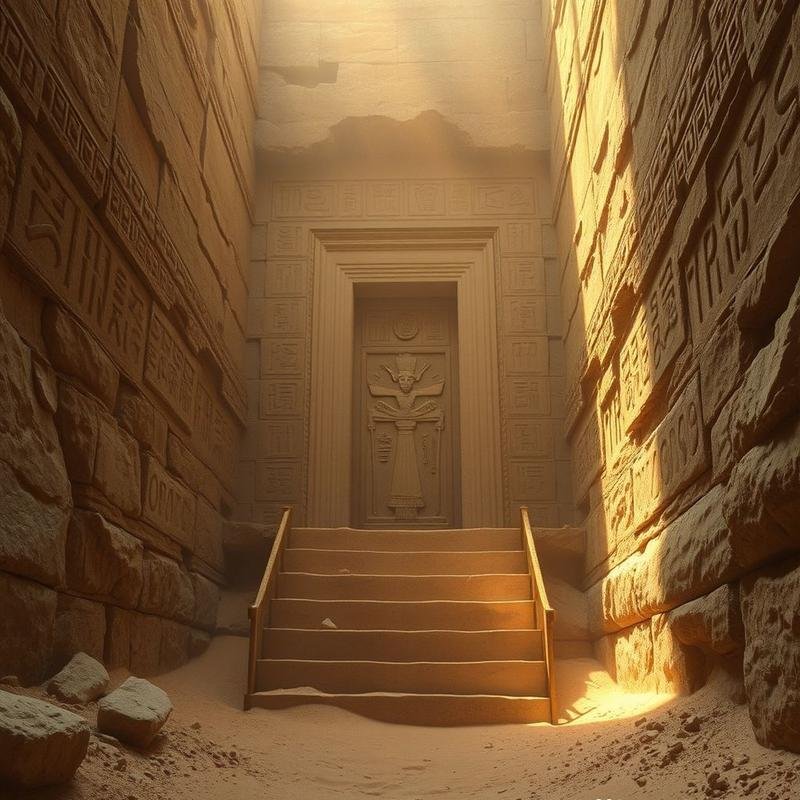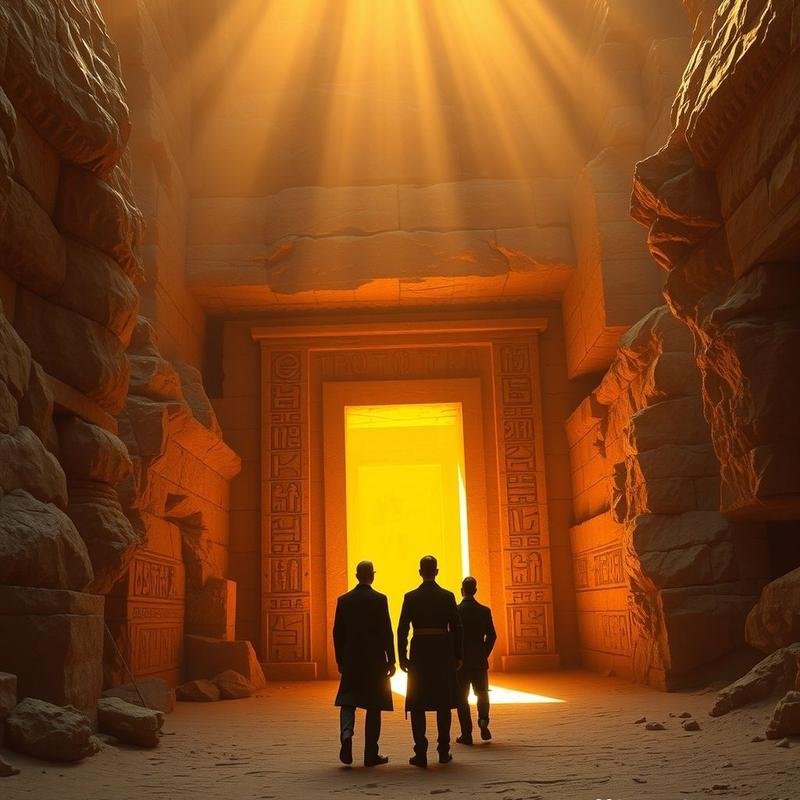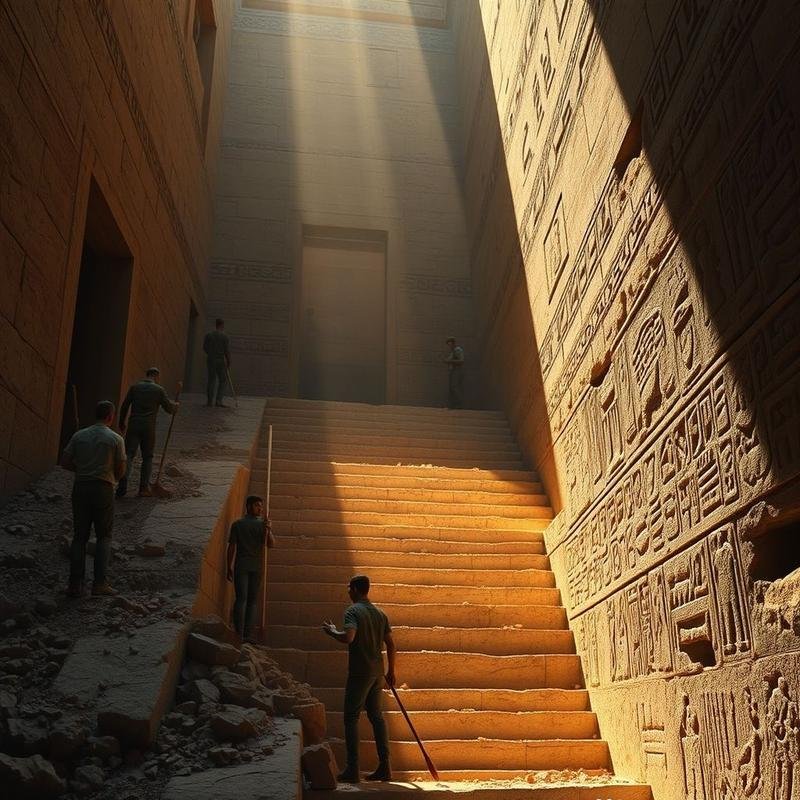The Curse of Tutankhamun: Myth vs. Science? 🔬 An Exploration of the Eerie Tale

Tutankhamun’s Curse: Legend vs. Reality
The legend of the Pharaoh’s curse has been associated with ancient Egypt since the 1922 discovery of Tutankhamun’s tomb, though its origins predate this event. The concept gained widespread traction following the discovery, becoming interwoven with historical narratives. Its genesis can be traced to the 19th century, coinciding with increasing European interest in Egyptian antiquities, when accounts of unusual incidents affecting excavators and researchers began to circulate. These narratives were not merely superstitious beliefs but reflected a genuine concern regarding the violation of the sanctity of the deceased, a concept deeply ingrained in ancient Egyptian civilization. The notion of a curse, potentially residing within the hieroglyphic texts inscribed on tomb walls, which issued stern warnings against disturbing the pharaohs’ remains, rapidly disseminated. It transcended academic circles, permeating literature, art, and cinema, ultimately becoming an integral component of global popular culture. From the image of the mummy to sensationalized magazine articles, the curse became a symbol of the mystery and perceived danger associated with ancient Egypt. However, the question remains: is it purely fiction, or does an alternative explanation exist?
The Discovery of Tutankhamun’s Tomb
November 4, 1922, marked a pivotal archaeological moment in the Valley of the Kings. After five years of persistent effort, Howard Carter, the determined British archaeologist, had not abandoned his search for the tomb of Tutankhamun, the young pharaoh who reigned during the 14th century BC, specifically within the 18th Dynasty. While his team was clearing debris near the tomb of Ramses VI, a staircase carved into the rock was unexpectedly revealed. This was a crucial turning point. Exercising considerable caution, Carter directed the removal of additional rubble, uncovering a complete series of steps leading to a sealed doorway. The seal bore the name of Tutankhamun. An urgent telegram was dispatched to his patron, Lord Carnarvon, in England, who eagerly anticipated the opportunity to witness this historic occasion. On November 26th, Carnarvon arrived, and the team assembled before the sealed entrance. With a steady hand, Carter created a small opening in the door and inserted a lit candle. The rising hot air from within caused a momentary hesitation. He then turned to Carnarvon and inquired in a hushed tone, “Can you see anything?” “Yes, wonderful things.” Carter’s words ignited a global sensation and initiated a narrative that captivated the world’s imagination: the story of the young pharaoh and his invaluable treasures, and the narrative of the curse that purportedly afflicted anyone who dared to disturb his resting place.
The Alleged Curse: A Series of Unexplained Deaths
Within weeks of the tomb’s grand opening, a series of tragic and unexplained deaths began to instill fear. Lord Carnarvon was the first prominent casualty. It is reported that a mosquito bite on his cheek led to complications, resulting in his death in Cairo on April 5, 1923, less than five months after entering the tomb. While some accounts attribute the cause of death to blood poisoning and pneumonia, rumors of the pharaoh’s curse began to proliferate. The press readily amplified the atmosphere of superstition. Newspaper headlines proclaimed the news of the mysterious deaths, directly linking them to the desecration of the tomb. “The Curse of Tutankhamun Strikes Again,” some newspapers declared. The alleged curse was not confined to Carnarvon alone. Reports surfaced of other deaths associated with the tomb: George Jay, who collaborated with Carter; Archibald Reid, who X-rayed Tutankhamun’s body; Sir Douglas Reid, who examined the mummy; and Richard Bethell, Carnarvon’s secretary, who was found deceased under mysterious circumstances. Were these merely tragic coincidences? Each subsequent death served to further fuel the narrative of the curse. Although the official causes of death ranged from infections to various illnesses, the chronological sequence of the deaths and the direct association of the victims with the tomb created a compelling narrative of unseen forces seeking retribution. These events solidified the concept of the pharaoh’s curse in the public consciousness, transforming it into a shared cultural memory.
Scientific Explanations: Microbiology and Chemistry
However, beyond the narrative power of the curse, scientific analysis offers more plausible explanations. It is hypothesized that Tutankhamun’s tomb, after millennia of closure, became an ideal environment for the proliferation of microorganisms. Fungi, particularly Aspergillus, may have played a significant role. These fungi, prevalent in humid and enclosed environments, release microscopic spores that can induce severe pulmonary infections, especially in individuals with compromised immune systems. The risks extended beyond fungi; anaerobic bacteria were also present, thriving in oxygen-deprived conditions. These bacteria, potentially present in the organic materials within the tomb, could cause diseases such as tetanus or food poisoning if introduced into the body through wounds or inhalation. Furthermore, the materials employed in embalming, such as resins and oils, may have transformed into toxic substances over time, further exacerbating the hazardous environment within the tomb. The confluence of these factors contributed to the deterioration of the health of some individuals who entered the tomb. Thus, the legend of the curse gained credence, while the underlying causes resided in the realms of microbiology and chemistry. The enclosed environment of the tomb, over thousands of years, fostered a unique combination of microorganisms that the human immune system was ill-equipped to combat.
Statistical Analysis: Contextualizing the Mortality Rate
Amidst the media frenzy surrounding the pharaoh’s curse, the voice of objective statistical analysis was often overshadowed. It is important to contextualize the numbers. In the 1920s, the average life expectancy in Europe and North America ranged from 50 to 70 years, with considerable variations across countries and demographic groups. Of the 58 individuals who participated in the opening of the tomb, eight died within a twelve-year period. Does this represent an exceptional mortality rate? Assuming an average life expectancy of 55 years, is the probability of an individual in their fifties or sixties dying within a decade truly a rare occurrence? The group included prominent figures, many of whom led demanding lives involving frequent travel. Lord Carnarvon himself suffered from chronic health issues prior to entering the tomb. Furthermore, factors such as urban pollution and prevalent infectious diseases at the time increased the likelihood of premature death. To conduct an objective assessment, the mortality rate of this group should be compared to the general mortality rate for a comparable socioeconomic class during that era. The available evidence suggests that the deaths, while undoubtedly tragic, were likely within the expected rates for the time. Does this not weaken the argument for the curse and strengthen the hypothesis of pure coincidence?
Conclusion: Myth, Science, and the Power of Belief
The legend of the pharaoh’s curse, despite its allure and widespread appeal, obscures simple scientific realities. Fungi, bacteria, and potentially toxic substances, in conjunction with the pre-existing health conditions of the individuals involved, provide a more logical explanation for the tragic events that followed the discovery of Tutankhamun’s tomb. Nevertheless, the curse remains embedded in the collective imagination, serving as a reminder of the power of myths and legends in shaping our understanding of the world. Our current scientific understanding allows us to transcend superstitious beliefs, but this does not negate the cultural significance of these myths. The curse, whether real or imagined, reflects a profound respect for the deceased and for history. It serves as a reminder that the past possesses power and that we must approach it with caution and reverence. We have observed how science can elucidate events that appear mysterious. However, do you believe that science alone is sufficient to explain all the unusual phenomena associated with Tutankhamun’s tomb, or is there a place for myths and legends in our interpretation of history? Share your perspectives in the comments.








